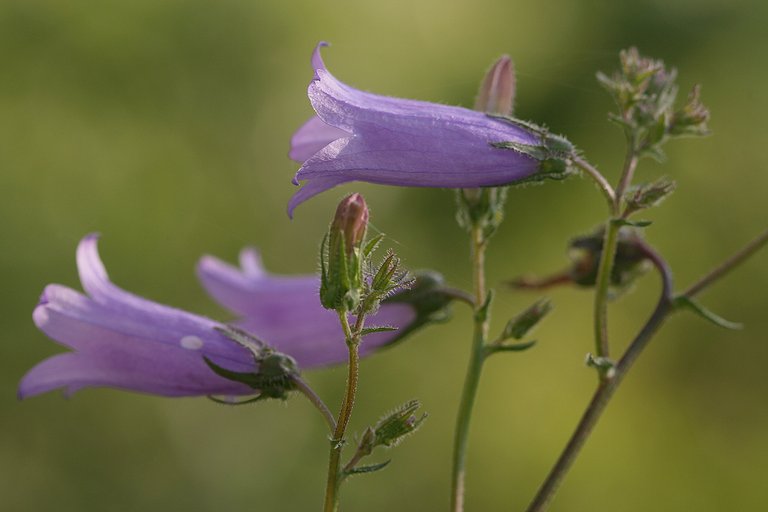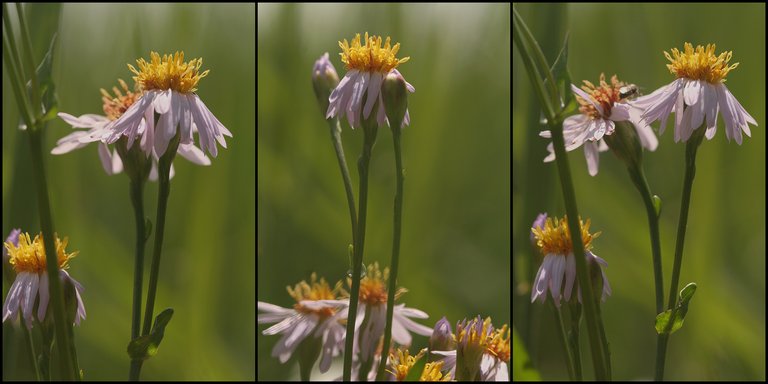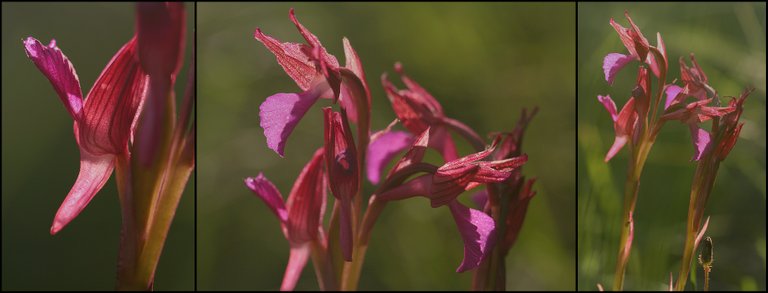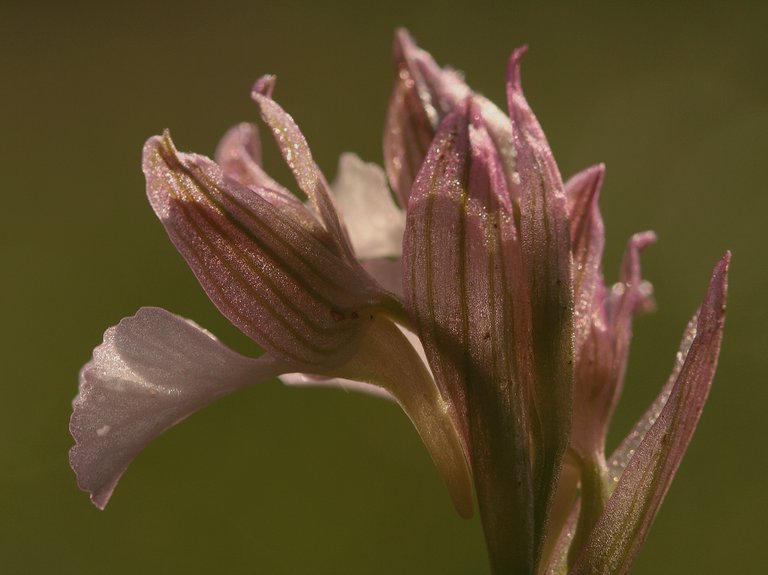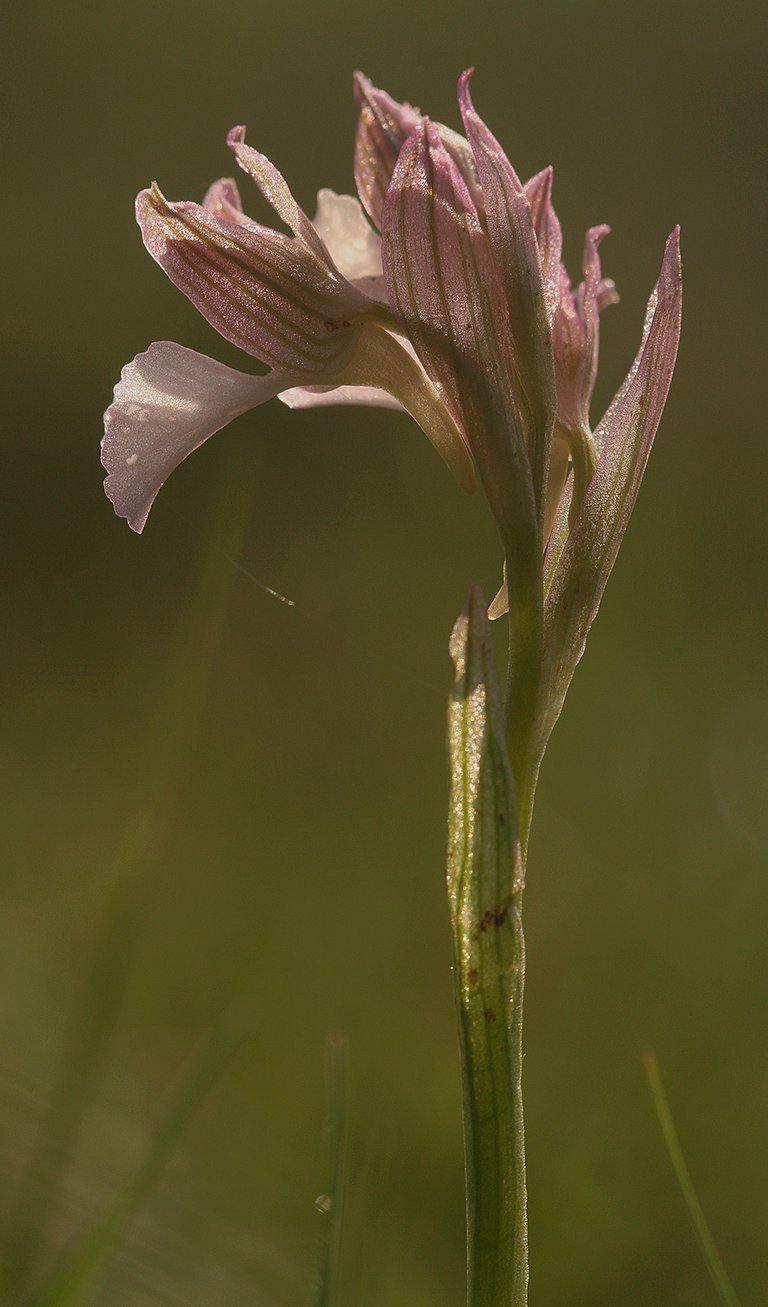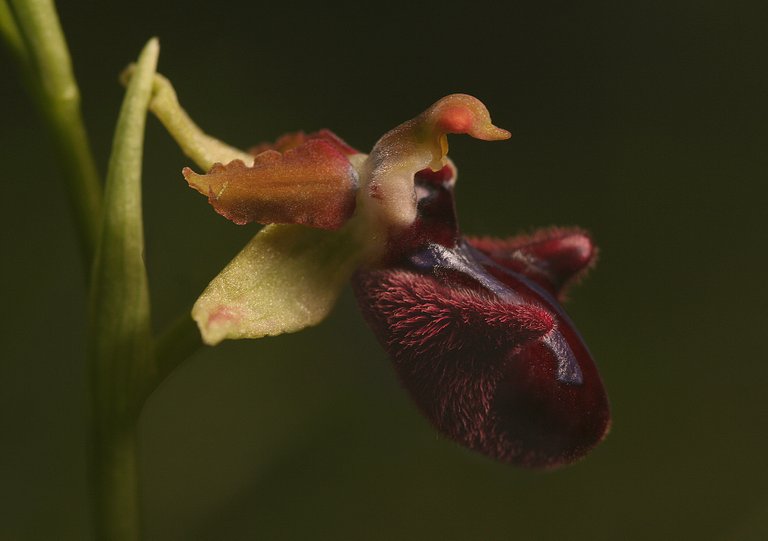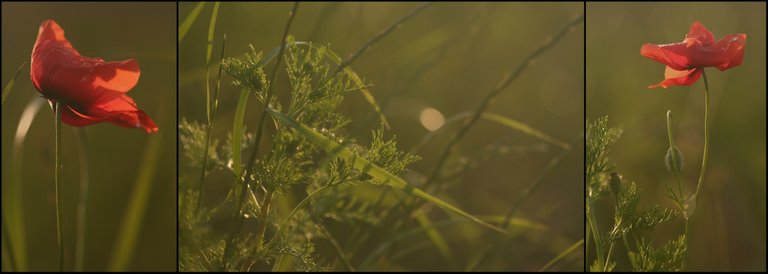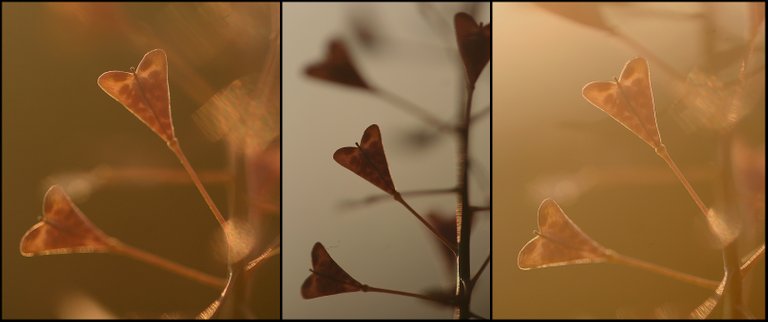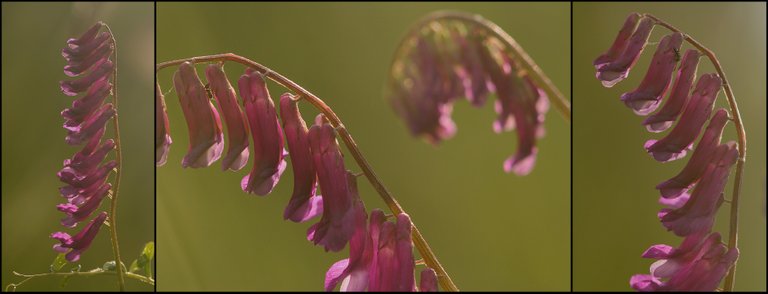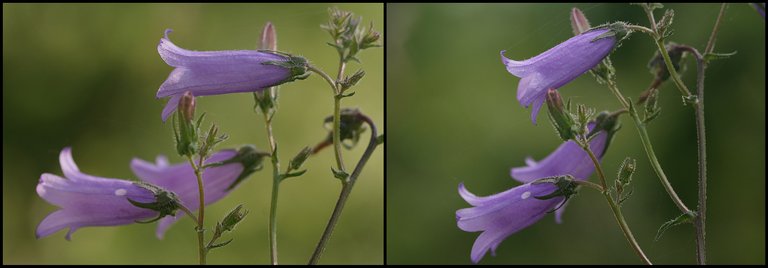Quite often in summer, I ramble across the meadows for hours and collect flowers with my camera. In this post, you'll see some colorful petals caught in the last days of June 2010.
The flowers in this photograph are very common in my area, but I don't know the name of the plant. I found a bunch of confusingly similar flowers on the Internet. This time the search didn't help much.
Here you can see the Tripolium pannonicum flowers.
This plant usually grows around muddy inlets with brackish water. If you enlarge this photograph, you may notice a small ant in the picture. In the following triptych ...
... you can see the showy flowers ...
... of the Pink Butterfly Orchid (Anacamptis papilionacea). In this species, the flowers come in various shades of pink, red, and magenta.
This is a pale version.

The flowers of this Anacamptis papilionacea aren't fully developed.
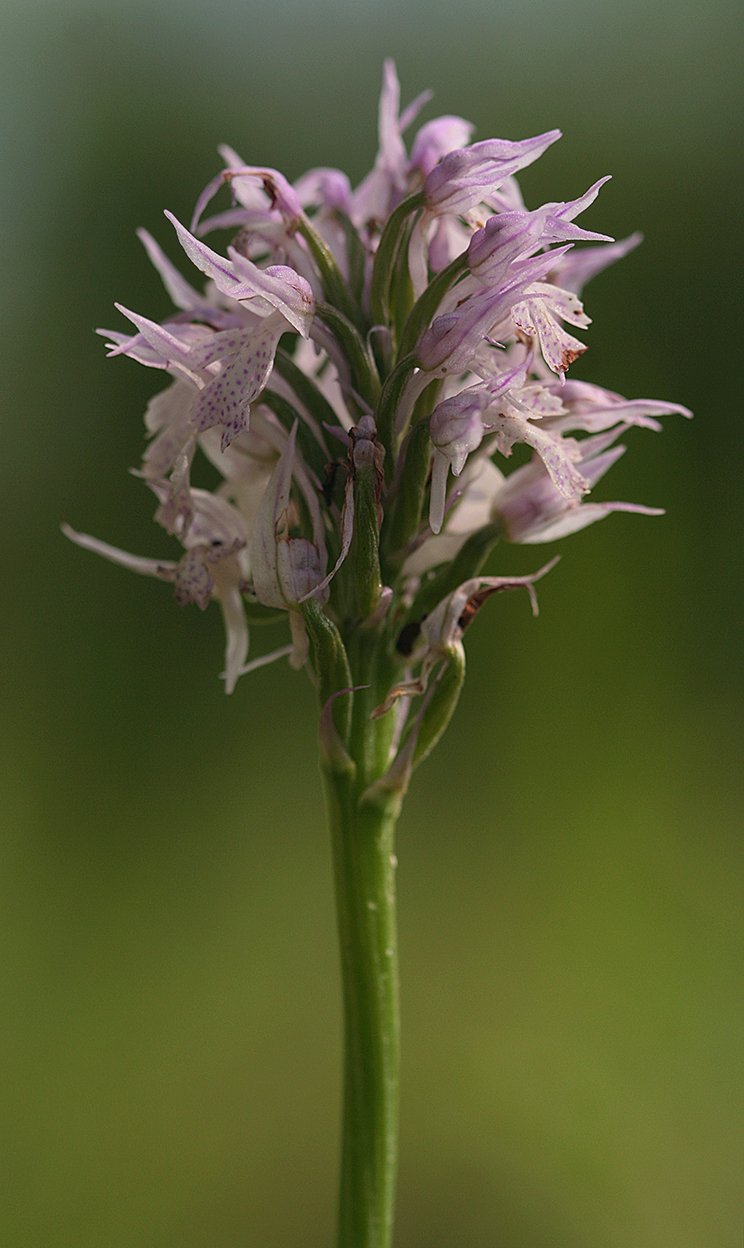
Here you can see another orchid.
The Neotinea conica. The much smaller flowers of this species are organized in lovely clusters.
Flowers of many orchids use visual mimicry to attract various solitary bees and are therefore shaped in strange and unconventional ways. Here you can see the Ophrys incubacea flower.
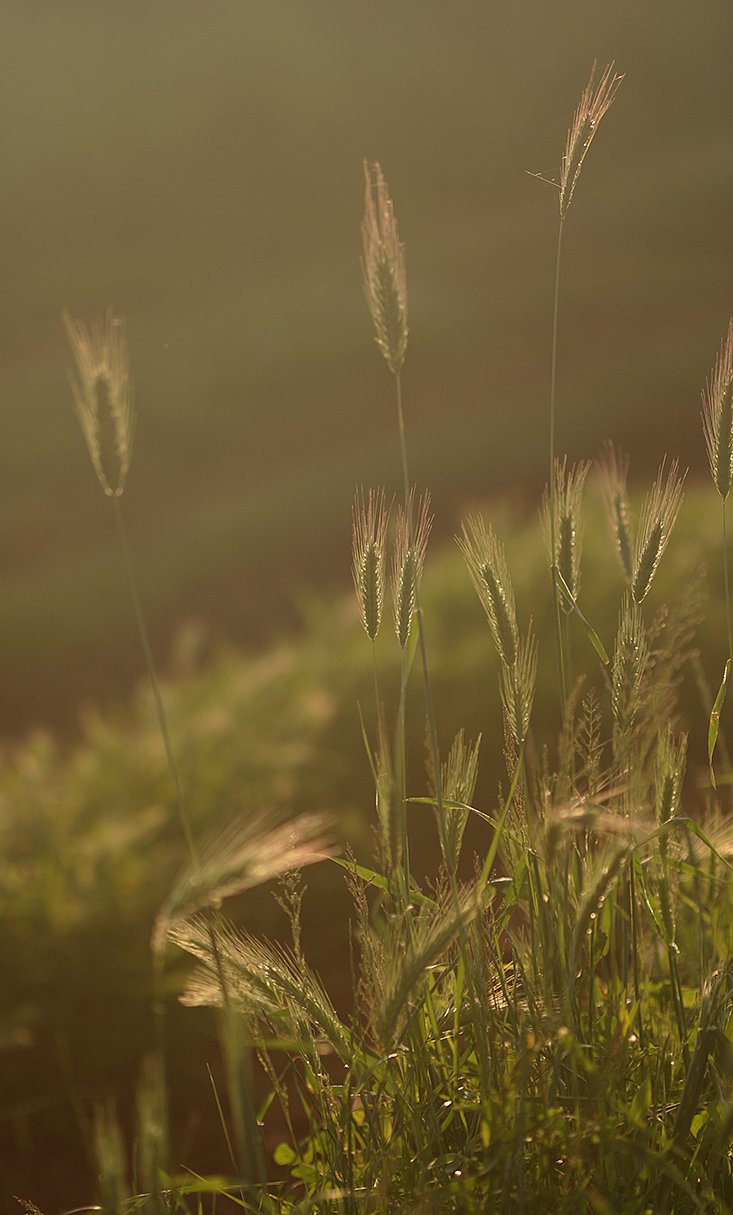
If you search for flowers in this photograph - you won't find them. This is a green intermezzo with some grass that isn't in bloom.
The common poppies usually grow surrounded by various grasses.

These are the small, inconspicuous flowers of the Conringia orientalis plant.
This Capsella bursa-pastoris had flowers a couple of weeks before these photographs were taken. Here you can see only the tiny, heart-shaped fruits filled with minuscule seeds that can be seen in these shots because the backlight made the fruits translucent.
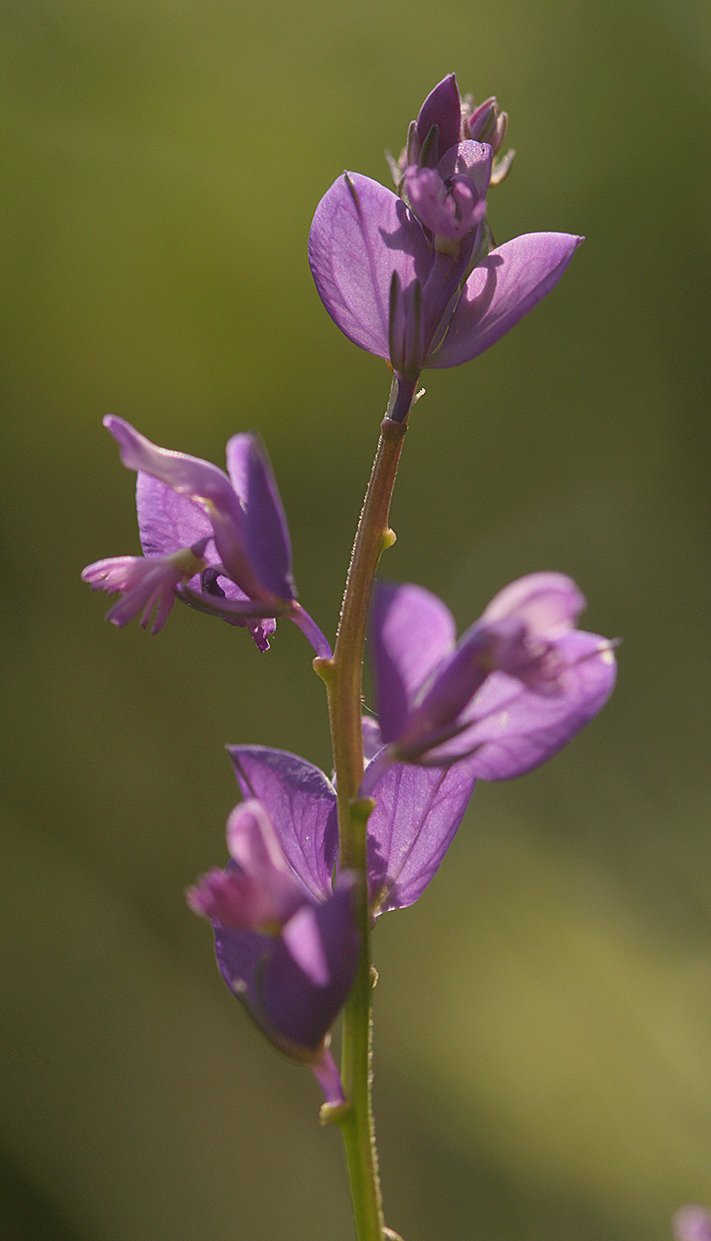
The shape of Polygala vulgaris flowers ...
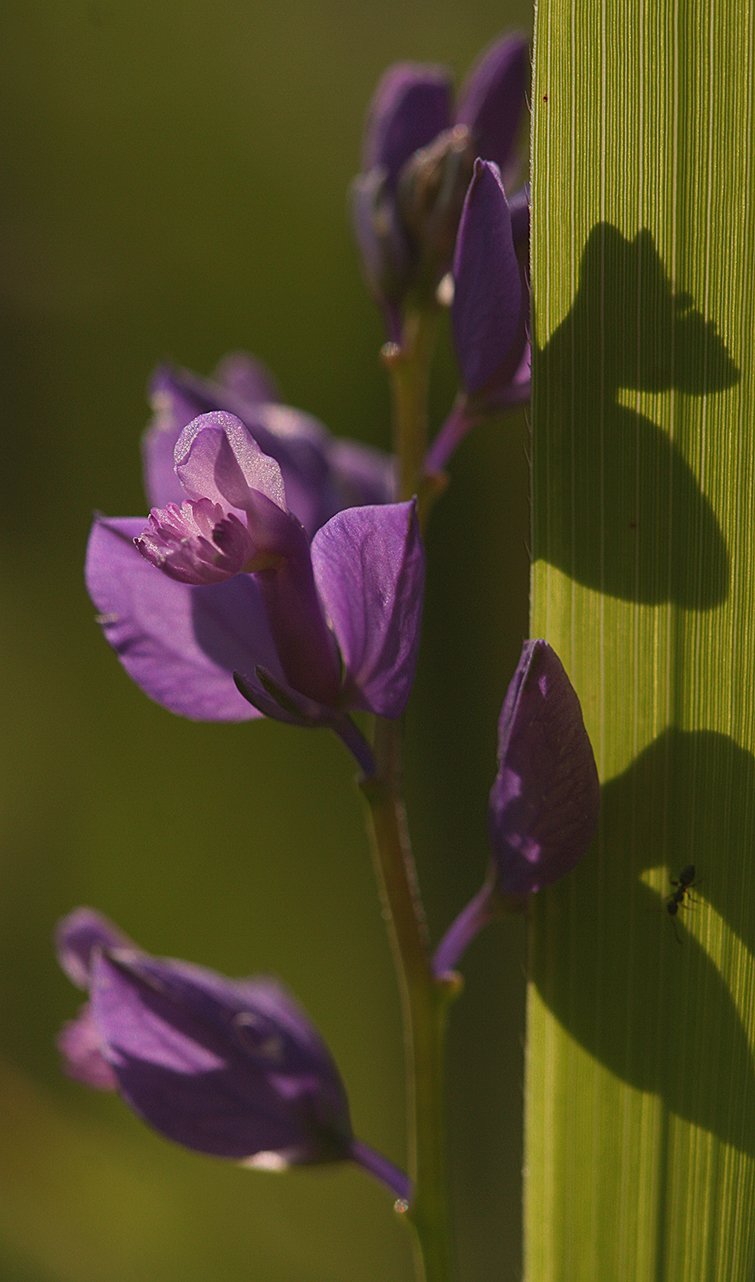
... is also pretty interesting.

They look like tiny flowers surrounded by colorful leaves.
Here you can see the flowers of the Vicia villosa plant.
As I was photographing, the scattered clouds were floating in the sky, changing the intensity of light. In these last two photographs, you can see the subtle difference in the intensity of ambient light.
AND THAT'S IT. AS ALWAYS IN THESE POSTS ON HIVE, THE PHOTOGRAPHS ARE MY WORK - THE END.
